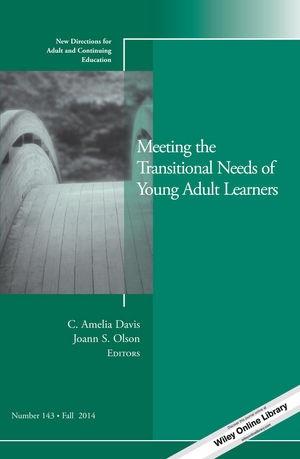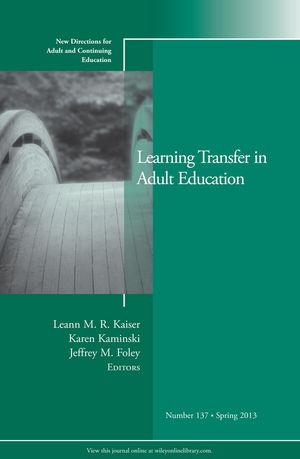Resources by Rhiannon Graybill

In graduate school, I spent a year teaching at San Quentin State Prison while writing my dissertation. I loved my Religion and English classes at the prison and frequently remarked to friends that teaching incarcerated men, many of them in their mid-thirties or beyond, was strikingly similar to teaching 18-22-year-old undergraduates at UC Berkeley. “They make the same excuses about why they couldn’t do the reading,” I loved to tell fellow graduate student instructors. The students, those on the inside and on the outside, also often struggled over the same points – how to write a persuasive thesis, how to conduct research, how to understand unfamiliar religious practices. Eventually, I found a job at Rhodes College in Memphis, TN, and left both Berkeley and San Quentin behind. After several years at Rhodes, a colleague invited me to teach in another prison education program, this time a “great books” program at the West Tennessee Women’s Prison. I jumped at the chance and offered to cover the Hebrew Bible. Strategically, I decided to teach the two books I was already teaching to Rhodes undergraduates in my Feminist Biblical Interpretation class: Ruth and Esther. This suggested several advantages: I would already be prepared for what the students would have to say about the texts, what directions the conversation might take, and I thought women might be interested in reading texts where female relationships, like that between Ruth and Naomi, are foregrounded. I entered the first class at WTWP confident in what would happen. I had just taught Ruth to my traditional undergraduates a week before and the Rhodes students had had excellent discussion, especially about Ruth and Naomi and their relationship (Ruth, you’ll recall, is urged by her mother-in-law Naomi to leave after her husband dies; Ruth replies with the famous words, “Where you go, I will go; Where you lodge, I will lodge; your people shall be my people, and your God my God. Where you die, I will die— there will I be buried” [Ruth 1:16, NRSV]). My Rhodes students were open to the possibility of queer readings of Ruth and Naomi – generally, they were interested in finding and ferreting out pockets of homoeroticism in the text – though also critical of Naomi as “a whiner.” Ruth, meanwhile, seemed less a loyal friend or lover than a burden – “like someone else’s pet you have to take care of,” as one student put it. The women at WTWP were also very enthusiastic to talk about Ruth, but they had different understandings of the relationships in the text. They were, on the whole, far more sympathetic to Naomi and “what she’s been through.” They were mostly (though not entirely) reluctant to see the relationship between the two women as homoerotic, but they placed great value on reading it as a strong friendship. Ruth and Naomi had each been through a great deal. They needed each other. This experience of teaching the same text in two very different groups was a valuable pedagogical reminder to me about the dangers of making assumptions about students and how they will respond to the text. It was also useful in thinking about trauma. Many incarcerated women are survivors of trauma, especially violence and sexual violence. Incarceration challenges family bonds and strains relationships. All of this is well known. What I did not realize until teaching Ruth in prison, however, was the unique hermeneutic perspective it gives students into the text. These women read the book with greater empathy, and with greater attention to the dynamics of its relationships. They understood why Ruth and Naomi needed each other. (Relatedly, when we read Esther the following week, they took a dim view of the men in the text, especially Ahasuerus for his sexual exploitation of women and Mordecai for his strategic exploitation of his niece Esther. These readers intuited what scholars such as Nicole Duran and Randall Bailey have argued, that the book of Esther is a work of male exploitation). The traditional undergraduates at Rhodes have their own traumas, and these too influenced their reading. College students are especially attuned to the fraught relationships between children and parents -- this came across in their reading of the book. Sexual exploration is also a cause of interest, as well as anxiety, in college -- these readers were more open to the possibility of queer romance in the text. The traumas that shape our lives shape, as well, how we read texts. This is a simple lesson, but one that the students in my two Ruth classes helped me understand better.

Part of the series “New Directions for Adult and Continuing Education,” Meeting the Transitional Needs of Young Adult Learners is the first entry to address young adult learners in thirty years. As such, it is a welcome contribution to the series, as well as a valuable resource in its own right. Faculty teaching traditional undergraduates, as well as those in continuing and adult education roles, will find much of value here. The terms “young adult” and “youth” are used across the essays in the volume, though without a single common definition. Generally, “young adult” refers to individuals from ages eighteen to twenty-five, though with some flexibility on both sides; adult education may begin at sixteen, as Davis notes (chapter 6). Chapter 1, by Joanna Wyn, introduces several key concepts that recur in subsequent chapters. Wyn offers a nice overview of the scholarship of youth transitions, new adulthood, and age. She argues that the “metaphor of transition” — a frequent feature in discussions of young adulthood — should be replaced with a “metaphor of belonging” that emphasizes relationships and connections (9). Indeed, many of the following chapters take up this call for an emphasis on relationships and belonging. Chapters 2 through 8 follow a basic model of identifying a specific community, reviewing the literature, data, or relevant theoretical work relating to that community, and concluding with suggestions for instructors. Thus Brendaly Drayton (chapter 2) introduces and theorizes cultural difference, with special attention to ethnic difference and the experience of young adults positioned in multiple cultures. Drayton encourages instructors to use texts from a range of cultures as well as collaborative learning practices. Rongbing Xie, Bisakha (Pia) Sen, and E. Michael Foster (chapter 3) offer a similar introduction to “vulnerable youth,” a broad category that encompasses socio-economic disparities, mental health, welfare, and involvement with the justice system. Noting the problem of youth who “age out” of social services, they call on educators to be informed and competent allies for vulnerable youth and to provide social support. Jessica Nina Lester (chapter 4) makes a similar argument with respect to “youth with dis/ability labels.” The pedagogical emphasis in these chapters is on the affective and relational, encouraging instructors to engage beyond course material. Steven B. Frye’s contribution addresses young adults in faith communities (chapter 5). Instructors in confessional contexts may find his insights helpful; in other contexts, less so. The final three chapters are the work of the editors, C. Amelia Davis and Joann S. Olson. Davis (chapter 6) discusses adult education programs as they serve young adult learners, and offers some helpful suggestions for strengthening these programs. Olson (chapter 7) takes up the transition from school to workplace, arguing that educators can intentionally create classroom and school experiences that prepare students for, and ease the transition to, the workplace. She also offers a number of useful examples, including discussing class assignments. A final chapter by Olson and Davis (chapter 8) offers a concise overview of key themes from the preceding chapters. This is a valuable collection of essays, which much to offer all educators working with young adults.

Learning Transfer in Adult Education (New Directions for Adult and Continuing Education, Number 137)
Leann M. R. Kaiser, Karen Kaminski, and Jeffrey M. Foley’s edited volume Learning Transfer in Adult Education offers a concise and readable entry point into the topic of learning transfer. While the stated focus of the volume is adult education, many of the themes and strategies considered will be of interest to those teaching traditional undergraduates as well. According to the editors, “Learning transfer, simply stated, is the ability of a learner to apply skills and knowledge learned in one situation or setting to another” (1). This goal, they suggest, is fundamental to any educational enterprise. In the first chapter, Foley and Kaiser introduce learning transfer and concepts associated with it, providing a useful framing for the chapters that follow. In particular, Foley and Kaiser explain the distinction between “near transfer,” in which the new situation closely resembles the original learning context, and “far transfer,” in which it does not. These and a handful of other key terms reappear throughout the essays; this chapter deserves a careful reading. The chapter also offers a brief overview of some tools available to instructors, many of which reappear or are discussed in greater detail in later chapters. Chapters 2 through 7 offer a variety of perspectives. Nate Furman and Jim Sibthorp (chapter 2) consider experiential learning techniques. These include problem-based learning, project-based learning, cooperative learning, service learning, and reflective learning. Three strong case studies are offered in this chapter, which help demonstrate the techniques in action. One of the techniques, problem-based learning (PBL), is the focus of the contribution by Woei Hung (chapter 3). Hung introduces the distinction between “well-structured” and “ill-structured” problems; the latter are more commonly found in the workplace and thus are productively used in PBL. Hung also comments on the cognitive processes that underlie effective learning transfer; these are complemented nicely by Jacqueline McGinty, Jean Radin, and Karen Kaminski’s study of “Brain-Friendly Teaching” (chapter 5). As the phrase “brain-friendly” suggests, the chapter skews toward pop psychology, but many of the techniques seem to hold potential. Patricia L. Hardré’s contribution (chapter 4), meanwhile, offers a serious engagement with the question of authenticity as it plays out in technology design. The remaining two case studies take up broader concerns. Rosemary Closson (chapter 6) offers a nuanced review of issues surrounding race and cultural difference in learning transfer, combining theoretical and practical discussion. This chapter is especially valuable for instructors interested in race, cultural difference, and pedagogy. Jeani C. Young (chapter 7) offers an equally sensitive treatment of personal change. The volume concludes with a discussion by the editors on “applying transfer in practice.” While those teaching adult learners will especially benefit from the specific examples and case studies, all interested readers stand to profit from this volume. In particular, its wealth of practical examples and classroom strategies offer quick and immediate value to the busy reader.